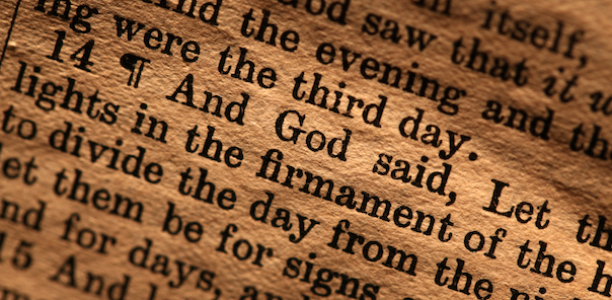By David Faust
 We take light for granted. Flip a switch and you can light up every room in your house. Push a button and your car’s headlights illuminate the road ahead.
We take light for granted. Flip a switch and you can light up every room in your house. Push a button and your car’s headlights illuminate the road ahead.
For most of human history, though, light required a lot of work. The ancient Egyptians used mirrors to bring sunlight into caves. Northern Europeans survived dark winters by storing up firewood and oil for their lamps.
As the Hebrews moved across the desert toward Canaan, God told Moses to construct a portable worship center—a tabernacle the people carried with them. The design called for items filled with spiritual significance, including a bronze-covered altar, a gold-covered table, the ark of the covenant, and other items enclosed behind specially made curtains (Hebrews 9:1-5). No windows let light inside the tent. The Holy Place was illuminated by a lampstand (a candelabra or menorah). According to Exodus 25:31-40, the lampstand was made from a solid piece of beaten gold. It contained six branches and a center shaft topped by cups shaped like open almond flowers. Each day a priest trimmed the wick and replenished the oil that kept the seven lamps burning (Exodus 30:7, 8).
Nonstop Light
“The Lord said to Moses, ‘Command the Israelites to bring you clear oil of pressed olives for the light so that the lamps may be kept burning continually’” (Leviticus 24:1, 2). The priests tended the lamps, but ordinary people participated too by contributing pure olive oil, free from discoloration or residue from dust, sticks, or leaves. God said, “Aaron is to tend the lamps before the Lord from evening till morning, continually. This is to be a lasting ordinance for the generations to come. The lamps on the pure gold lampstand before the Lord must be tended continually” (24:3, 4).
The lampstand served a practical purpose by lighting the inside of the tabernacle. Without its light, Aaron and the priests would have stumbled in the darkness as they carried out their tasks and offered sacrifices to God. Like the “eternal flame” that flickers by the grave of President John F. Kennedy, the light of the tabernacle was supposed to burn continually. The seven lamps lit up the Holy Place and served as a reminder of God’s presence. That’s why the priests needed to tend the lamps every day.
God’s Light in Us
The tabernacle’s lampstand did more than illuminate the room. After all, light is a powerful symbol throughout the Old and New Testaments. It points to God himself, for “God is light; in him there is no darkness at all” (1 John 1:5). It reminds us of God’s Word, which the psalmist called “a lamp to my feet and a light on my path” (Psalm 119:105). God intended for Israel, and eventually the church, to be “a light for the Gentiles”—a chosen people who “declare the praises of him who called you out of darkness into his wonderful light” (Isaiah 49:6; 1 Peter 2:9).
Jesus said, “I am the light of the world” (John 8:12), and he told his followers to let our light shine before others (Matthew 5:16). Seven golden lampstands represent the seven churches mentioned in the book of Revelation (1:12, 20). The seven-branched candlestick reminds us of the completeness and variety of God’s one church—united and ignited by the same Holy Spirit, while existing in many congregations.
An old camp chorus says, “Give me oil in my lamp, keep me burning.” We’re a royal priesthood. It’s every Christian’s job to tend the lamps.
David Faust serves as the Associate Minister at East 91st Street Christian Church in Indianapolis, Indiana.
The Lookout’s Bible Reading Plan for March 1, 2015
Use this guide to read through the Bible in 12 months. Follow David Faust’s comments on the highlighted text in every issue of The Lookout.
Matthew 20:17-34
Acts 27:27-44
Psalm 45
Leviticus 21–23
Matthew 21:1-11
Acts 28:1-16
Psalm 46
Leviticus 24, 25
Matthew 21:12-22
Acts 28:17-31
Psalm 47
Leviticus 26, 27
Matthew 21:23-32
Romans 1:1-17
Psalm 48
Numbers 1, 2
Matthew 21:33-46
Romans 1:18-32
Psalm 49
Numbers 3, 4



Comments: no replies